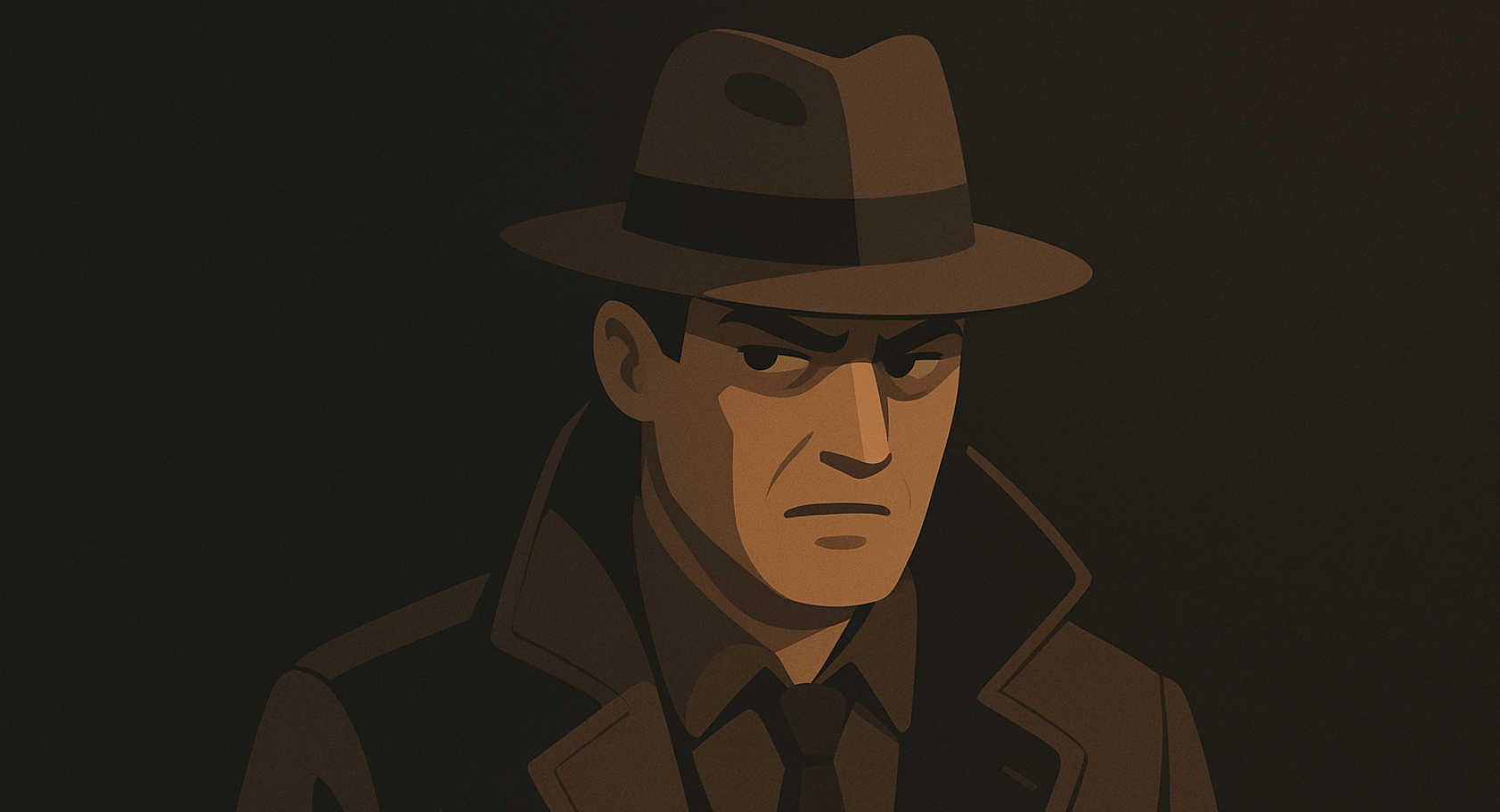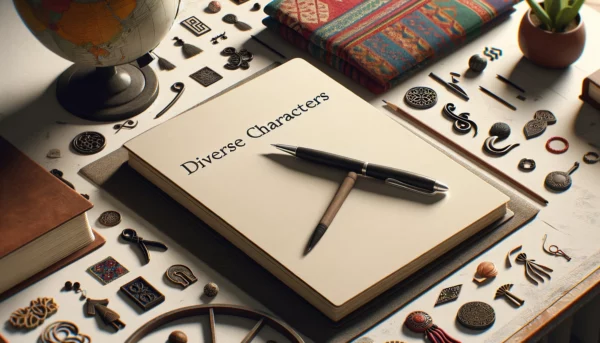Creating suspense in writing is the art of keeping readers hooked, kind of like a TV show that ends every episode with “To be continued…” Suspense in literature makes stories unforgettable. But what are elements of suspense that make readers hold their breath? Writers use suspense techniques like foreshadowing, pacing, and well-placed cliffhangers.
From the elements of suspense in Romeo and Juliet (where bad timing is everything) to the elements of suspense in Fahrenheit 451 (where books are hotter than ever, literally), suspense keeps audiences on edge.
In this post , we’ll explore which devices in a story can create suspense, and how you can use them to keep readers turning pages faster than a plot twist unfolds!
Suspense Definition: What is Suspense?
Before we get into it, let’s understand suspense better. Suspense is a narrative technique that creates a feeling of uncertainty and anticipation about upcoming events, prompting readers to wonder what will happen next. It keeps the audience emotionally engaged by delaying answers, introducing potential danger or conflict, and maintaining tension throughout the story.
Suspense (noun): a state or feeling of excited or anxious uncertainty about what may happen.
Suspense is used whenever a writer wants to keep readers emotionally invested and turning the page. It appears in moments where the outcome is uncertain; during danger, big decisions, hidden information, approaching conflict, or anything that could change the story’s direction. Authors use suspense to build tension, deepen engagement, and make readers eager to discover what happens next.
Your Publishing Journey Awaits – Start NowWhat Is Suspense In Literature?
Suspense is the art of making readers hold their breath and think, I have to know what happens next. In stories, building suspense usually grows out of three main things: plot twists, characters, and setting. Together, they create that tense, can’t-stop-reading feeling.
Plot twists
Plot twists are those “wait, what?!” moments that flip the story on its head. A good twist doesn’t come out of nowhere, it feels surprising but still makes sense. It changes how readers understand what’s going on and raises new questions. That mix of surprise and curiosity keeps readers glued to the page, trying to guess the next turn.
Character development
Suspense works best when readers care about the people in the story. A relatable main character gives us someone to worry about. A complex, unpredictable opponent (or problem) keeps us on edge. Tough choices, secrets, inner conflicts, and the fear of what might happen next all build tension. The more we understand what the characters stand to lose, the stronger the suspense.
Setting
Setting isn’t just scenery; it can quietly turn up the tension. A dark hallway, an empty street at night, a spaceship drifting in silence; places like these can limit options, hide threats, and make everything feel more dangerous. Even an ordinary setting can become unsettling if the mood shifts, making readers wonder what’s lurking just out of sight.
How These Elements Work Together
Plot twists keep the story moving, characters make us care, and setting shapes the mood and sense of danger. When these elements work together, every small clue, every half-truth, and every unanswered question adds to the suspense, pulling readers forward, page after page.
Examples of Suspense in Literature: Romeo and Juliet & Fahrenheit 451
Suspense is a crucial element in many literary works, enhancing tension and emotional engagement. Two notable examples where suspense plays a key role are Romeo and Juliet by William Shakespeare and Fahrenheit 451 by Ray Bradbury.
Elements of Suspense in Romeo and Juliet
- Foreshadowing – The Prologue warns that the lovers are doomed, setting a tragic tone.
- Dramatic Irony – The audience knows Juliet is alive when Romeo believes she is dead, intensifying the climax.
- Timing & Pacing – The rushed nature of their love and miscommunications heighten the suspense.
Elements of Suspense in Fahrenheit 451
- A Mysterious Setting – The dystopian world where books are banned immediately creates tension.
- Withholding Information – The reader slowly learns why Montag begins questioning society.
- The Ticking Clock – Montag’s time is running out as authorities close in, building urgency and suspense.
The Basics of Creating Suspense in Writing
Suspense in a story is that delicious, nail-biting feeling that something big is about to happen, maybe exciting, maybe dangerous, probably both. It’s what keeps you saying “just one more chapter” at 2 a.m. Suspense pushes the characters into tricky situations and pulls readers along for the ride. When it’s done well, it tugs on your emotions, mixing hope and worry so you need to know what happens next, but you’re also a little afraid to find out.
To understand what are elements of suspense, consider three key concepts:
- Heightened Emotions – Effective suspense building techniques evoke strong emotions, from fear and excitement to dread and anticipation. By carefully escalating these emotions, writers can create tension that makes the story more immersive and compelling.
- Building Tension – Strong elements of suspense involve structuring the plot and character actions to keep readers continuously compelled to turn the page. Whether placing characters in perilous situations or presenting a mystery to solve, each scene adds another layer of suspense.
- Creating Anticipation – Writers manipulate which devices in a story can create suspense through foreshadowing, red herrings, and strategic information withholding. When readers anticipate an event, whether they dread it or look forward to it, they become even more engaged.
Additionally, pacing is crucial in suspense writing. A well-paced story knows when to slow down for character development and when to speed up to heighten tension. The ebb and flow of suspense mirror real-life uncertainty, ensuring the reader remains hooked.
Techniques to Heighten Tension and Suspense
Creating a riveting suspense narrative requires masterful control over various literary devices and storytelling techniques. These tools are essential for crafting a story that keeps readers on the edge of their seats, eagerly turning pages. Among these, dramatic irony, red herrings, and cliffhangers play pivotal roles, alongside the strategic management of information and the perspective offered by different narrative viewpoints.
Dramatic Irony
Dramatic irony occurs when the audience knows more about the conditions and implications of events and circumstances than the characters in the story do. This discrepancy between the character’s understanding and the reader’s knowledge creates a uniquely compelling tension. For instance, if a character is unaware of the antagonist hiding in the basement but the reader is, every action that character takes towards the basement increases the suspense. The anticipation of the eventual revelation heightens the emotional stakes, making the narrative more engaging.
Red Herrings
Red herrings are false clues that mislead readers, making them anticipate outcomes that do not happen. They are particularly effective in mystery or detective stories where solving a puzzle is central to the plot. By leading readers down the wrong path, the writer can build a surprising and satisfying twist when the facts are revealed. Red herrings not only add depth to the narrative but also play a crucial role in keeping the reader guessing, thus maintaining suspense and interest throughout the story.
Cliffhangers
Cliffhangers are perhaps one of the most direct methods to create suspense. By ending a chapter or a scene at a crucial moment, the writer leaves the main story still unresolved, compelling the reader to move forward to find out what happens next. This technique is effective across genres and can be used to prolong suspense over a series of scenes or chapters, thus keeping the narrative momentum high and ensuring continuous reader engagement.
Withholding Information
The deliberate withholding of information, when done skillfully, can significantly amplify the suspense in a story. This technique involves keeping certain key details hidden from the reader, which are crucial to fully understanding the plot or the stakes involved. The controlled release of this information can lead to dramatic shifts in the narrative’s direction or the reader’s perception of a character or event. The timing of these revelations is critical: reveal too much too soon, and the suspense dissipates; delay too long, and the reader may grow frustrated.
Controlled Release of Crucial Plot Points
Related to withholding information, the controlled release of plot points involves planning the disclosure of information at intervals that maximally impact the reader’s emotional experience. This pacing is crucial and requires careful planning and execution. Each revelation should ideally build on the last, pushing the story toward the breaking point of its climax and intertwining with character development to deepen the narrative impact.
Third-Person Point of View (POV)
Using a third-person POV can maximize suspense by providing the writer the flexibility to offer multiple perspectives. This viewpoint allows the narrative to shift between characters, offering insights into their thoughts and emotions while maintaining an objective distance. This can be used to great effect in creating dramatic irony, as well as in presenting a broader picture of the story’s events, which might be unknown to the protagonists. For example, the reader can know the antagonist’s motives and actions while the main characters remain in the dark, creating a suspenseful anticipation for when the paths of the protagonist and the antagonist will inevitably cross.
Multiple Perspectives
Expanding on the use of third-person POV, employing multiple perspectives enhances the depth and complexity of the narrative. It allows the author to build a richer story world and craft more intricate plots. Each character’s perspective can add a piece to the puzzle, offering clues and red herrings in equal measure. This not only enriches the reader’s experience but also broadens the scope for creating suspense as each narrative thread weaves in and out of the others, sometimes aligning and at other times conflicting.

Special Focus: Timing and Pacing
Timing and pacing are instrumental in the craft of creating suspense. They dictate the rhythm of the narrative, controlling when the reader feels tension and relief. The effective use of these tools can transform a good story into an unforgettable journey through heightened emotions and gripping plot developments.
The Ticking Clock Scenario
One of the most effective suspense-building mechanisms is the ticking clock scenario. This technique involves setting a deadline or a time limit within which the characters must achieve a goal or avert a disaster. The looming deadline adds a layer of urgency that compels the reader to keep turning the pages. For example, a bomb set to explode at a certain time, a person needing rescue before a storm hits, or a crucial decision that must be made before midnight are all classic ticking clock scenarios. They heighten the stakes and force characters into action, often leading to rapid, tension-filled sequences that drive the narrative forward at a thrilling pace.
Sudden Reversals
Sudden reversals are another dynamic aspect of timing in suspense writing. These are moments in the story where the expected outcome of an event is flipped on its head, surprising the reader and changing the direction of the narrative. When used effectively, reversals can inject a story with new energy and refocus the reader’s attention. For instance, a character thought to be a friend reveals themselves as the antagonist or a seemingly solved mystery deepens with an unexpected twist. These reversals keep the narrative unpredictable and maintain a high level of engagement.
Influence of Timing on Suspense
The manipulation of timing influences suspense significantly. Through the careful arrangement of slow reveals and rapid action sequences, a writer can control the tension and release cycle that keeps readers engaged. Slow reveals allow the tension to simmer, building anticipation and depth as the reader is gradually given pieces of the puzzle. These are often used in conjunction with deeper character development and setting descriptions to enrich the story’s context.
Conversely, rapid action sequences create a burst of adrenaline and urgency that propels the narrative forward quickly. These are often climactic, resolving built-up tension in a satisfying release. The key to these sequences is their placement within the overall story arc—they should follow a buildup of suspense and precede a moment of reflection or revelation.
Balancing Information
The balance between revealing too much and too little information is critical in maintaining suspense. If too much information is provided too soon, the story loses its mysterious allure, and the reader no longer feels compelled to search for answers. Conversely, if too little is revealed, the reader might feel disconnected or frustrated with the pace of the narrative. Balancing this involves pacing the revelations so that they provide just enough information to keep the reader guessing but not enough to solve the puzzle. Each piece of information should lead to new questions, maintaining a cycle of tension and curiosity throughout the story.
Effective timing and pacing are about understanding the rhythm of human emotion and curiosity. They require a deep empathy for the reader’s experience and a strategic structuring of the narrative’s highs and lows. Mastering these aspects of storytelling will ensure that the suspense grips readers from beginning to end, making the story not only enjoyable but a compelling psychological experience.
Case Study: Analyzing Cormac McCarthy’s “The Road”
Cormac McCarthy’s “The Road” is a poignant example of how suspense can be masterfully woven into the fabric of a narrative, transcending genre boundaries and engaging readers through psychological tension and existential dread. McCarthy’s approach to creating an enduring suspenseful atmosphere is deeply intertwined with his narrative style and character development, crafting a story that is both gripping and emotionally resonant.
Creating a Suspenseful Atmosphere
McCarthy establishes a suspenseful atmosphere through the bleak and barren landscape that the characters traverse. The setting of a post-apocalyptic world is stark and fraught with uncertainty, which permeates every aspect of the novel. This constant undercurrent of danger, where every location and encounter could mean life or death, keeps the tension high.
The suspense is not just in the physical journey but in the day-to-day quest for survival as the father and son navigate through a devastated world where food, safety, and warmth are scarce. The fear of the unknown and unseen threats lurking in the desolate world adds a pervasive sense of dread that compels readers to continue through the harrowing journey with the characters.
Building Tension and Character Development
The relationship between the father and his son is central to the narrative tension in “The Road.” Their interactions and the father’s protective love for his son create a powerful emotional pull that sustains the story’s suspense. Every decision the father makes is fraught with tension, driven by the desperation to shield his son from the harsh realities of their world. This emotional investment in the characters transforms every encounter with other survivors and every resource scavenged into a suspenseful event, heightening the stakes of their survival.
Minimalist Style and Narrative Tension
McCarthy’s minimalist writing style further amplifies every suspenseful moment. His sparse, direct prose strips away any superfluous details, focusing the reader’s attention on the immediate experiences of the characters. This brevity delivers a stark portrayal of their bleak environment and grim reality, making the narrative more intense. The lack of quotation marks in dialogues blurs the lines between speech and thought, creating a fluid, dream-like quality that enhances the story’s suspenseful, almost claustrophobic atmosphere.
The minimalist style also means that much is left unsaid and unexplained, which compels readers to engage deeply with the text to glean the significance of each word and action. This engagement keeps the readers on edge, as they are constantly interpreting and anticipating rather than being passively fed information.
In “The Road,” McCarthy expertly balances the bleakness of the setting with the profound bond between father and son, using his distinctive minimalist style to craft a narrative that is both sparse and richly suspenseful. The result is a novel that not only tells a story of survival but also explores deeper themes of love, hope, and the human condition, all while maintaining a gripping atmosphere of suspense that resonates with readers long after the last page is turned.
Practical Tips for Writers
Incorporating suspense effectively across different genres requires a keen understanding of narrative tools and reader expectations. Here are some practical tips for writers aiming to infuse their stories with suspense, regardless of the genre they are working within.
Understand Reader Expectations and Genre Conventions
Each genre comes with its own set of expectations and conventions that guide reader anticipation. For instance, mystery readers look forward to solving the puzzle alongside the protagonist, while romance readers might anticipate personal barriers that challenge the relationship. Understanding these expectations is crucial because it allows writers to play with or subvert these conventions to create and write suspenseful stories. A romance novel might introduce an unexpected threat to the relationship, or a fantasy saga might place a character’s moral dilemma at the heart of the conflict, pushing the narrative toward suspenseful uncertainty.
Integrate Varied Narrative Techniques
Effective suspense hinges on the writer’s ability to juggle various narrative techniques:
- Pace Your Reveals: Gradually unveil secrets and twists to maintain tension.
- Create Compelling Characters: Characters with secrets or internal conflicts add depth and intrigue.
- Utilize Setting as a Character: An atmospheric setting can enhance the suspense. A dark, stormy night can set the perfect mood, whereas a sunny day at a busy market can lower the guard just before a twist.
Experiment to Find Your Unique Style
Every writer has a unique voice and approach to storytelling. Experimenting with different aspects of suspense can help writers find their distinctive style. Trying out various points of view, and narrative structures, or even playing with the timeline can reveal what best suits their storytelling style. For instance, non-linear storytelling can create complex suspense through a web of interconnected past and present events, while multiple viewpoints can provide contrasting perspectives that enhance the mystery.
Encouraging experimentation not only aids writers in honing their craft but also helps them discover innovative ways to weave suspense into their narratives. By continuously refining these techniques and understanding the emotional landscape of their audience, writers can craft stories that are not only engaging but also resonate deeply with readers, keeping them hooked from beginning to end.
Your Publishing Journey Awaits – Start NowFAQ: Creating Suspense in Writing
Q: What is suspense in literature?
Suspense in literature is a technique used to create anticipation, uncertainty, and tension in a story. It keeps readers engaged by making them eager to find out what happens next. Suspense can be built through elements like pacing, delayed revelations, foreshadowing, and the careful release of information. It is not limited to thrillers but can enhance storytelling in any book genre, from romance to science fiction.
Q: What are the key elements of suspense?
Suspense relies on several core elements:
Pacing – Controlling the speed at which information is revealed.
Foreshadowing – Dropping subtle hints about future events.
Character Development – Making readers emotionally invested in characters’ fates.
Plot Twists – Introducing unexpected developments that challenge reader expectations.
Setting – Using atmosphere and environment to heighten tension.
These elements work together to build tension and keep readers hooked.
Q: How do authors use setting to create suspense?
Setting plays a crucial role in building suspense by influencing the story’s mood and tone. A dark alley, a foggy forest, or a post-apocalyptic wasteland can heighten tension and evoke fear or unease. In The Road by Cormac McCarthy, the desolate, dangerous world constantly threatens the protagonist and his son, adding an ongoing sense of dread. The setting becomes an active force that limits the characters’ choices and increases the stakes.
Q: What suspense techniques can writers use to heighten tension?
Some effective suspense-building techniques include:
Dramatic Irony – When the audience knows something the characters don’t.
Red Herrings – False clues that mislead the reader.
Cliffhangers – Ending a scene or chapter at a crucial moment.
Withholding Information – Deliberately keeping key details hidden.
The Ticking Clock – Imposing a time constraint to create urgency.
These techniques ensure that readers remain engaged and eager to turn the page.
Q: How does suspense influence pacing in a story?
Pacing is a critical component of suspense. Slower sections build tension by developing characters and hinting at dangers ahead, while faster-paced moments create excitement and urgency. The balance between these speeds determines how suspenseful a story feels. For example, in a thriller, rapid action sequences can be followed by slower, eerie moments that build anticipation for the next big event.
Q: How do simple sentences create suspense?
Simple sentences can increase suspense by making the writing more direct and impactful. Short, abrupt sentences can convey urgency and make tense moments more intense. For example:
“She turned the corner. Stopped. Someone was watching.”
This brevity forces readers to pause and absorb the tension, making the moment feel more dramatic.
Q: How do you start off a suspense story?
A suspenseful story should begin with an engaging hook that raises immediate questions. Some effective ways to start include:
An unexpected event – A crime, disappearance, or shocking revelation.
A mysterious setting – A place that feels eerie or unsettling.
A compelling character dilemma – Someone in immediate danger or faced with a tough decision.
For instance, in Fahrenheit 451, the opening scene of a fireman burning books instantly establishes intrigue and raises questions about the world and protagonist.
Q8: How do you create suspense over text?
To build suspense in text-based communication (like short stories or messages), consider the following:
Use unanswered questions – Make the reader crave more information.
Limit what the characters (or reader) know – Withholding key details builds intrigue.
Increase the stakes – Introduce time pressure or imminent danger.
Use short, impactful sentences – These create a sense of urgency.
For example, if writing a suspenseful text message scene, breaking up dialogue with pauses and uncertainty can enhance tension:
“Don’t go into the house. Please. I saw something move inside.”








